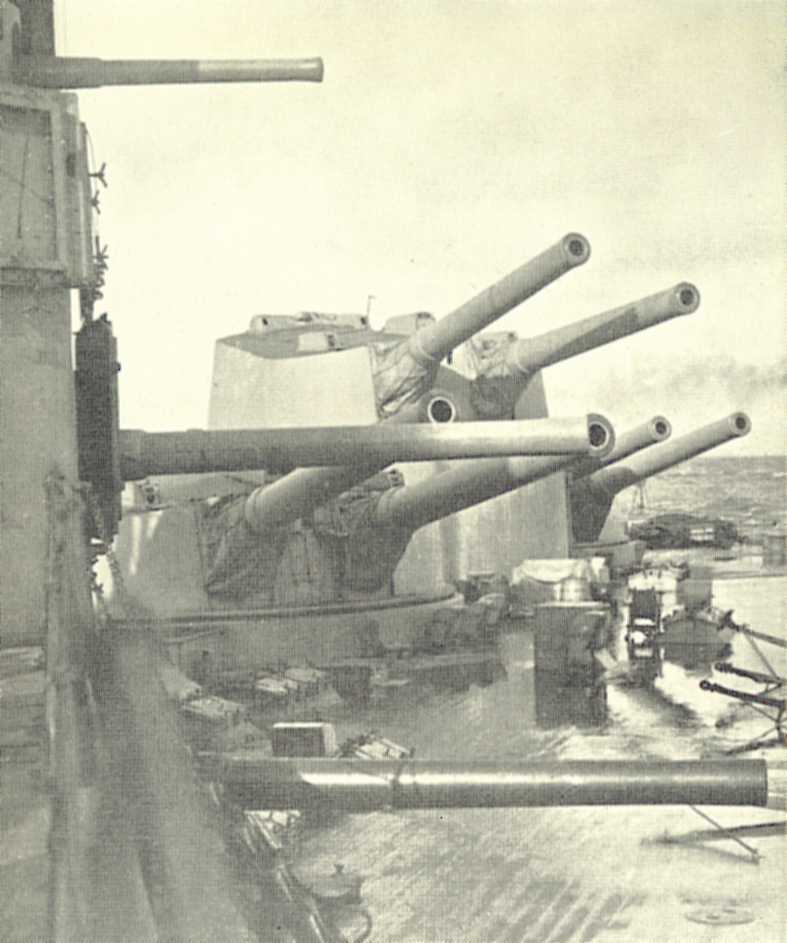|
Constructed of inner A tube, A tube and breech piece joined by a securing collar, wire, B tube, jacket, breech ring and breeech bush. Spare guns differed in having a B tube and jacket rather than a full-length jacket. Used a hand-worked Welin breech-block. A total of 24 guns were built. |

HMS Agincourt
|

Stern cluster of 12"/45
(30.5 cm) Turrets with 6" (15.2 cm) guns in forground and 3" (7.62
cm) at top left
|